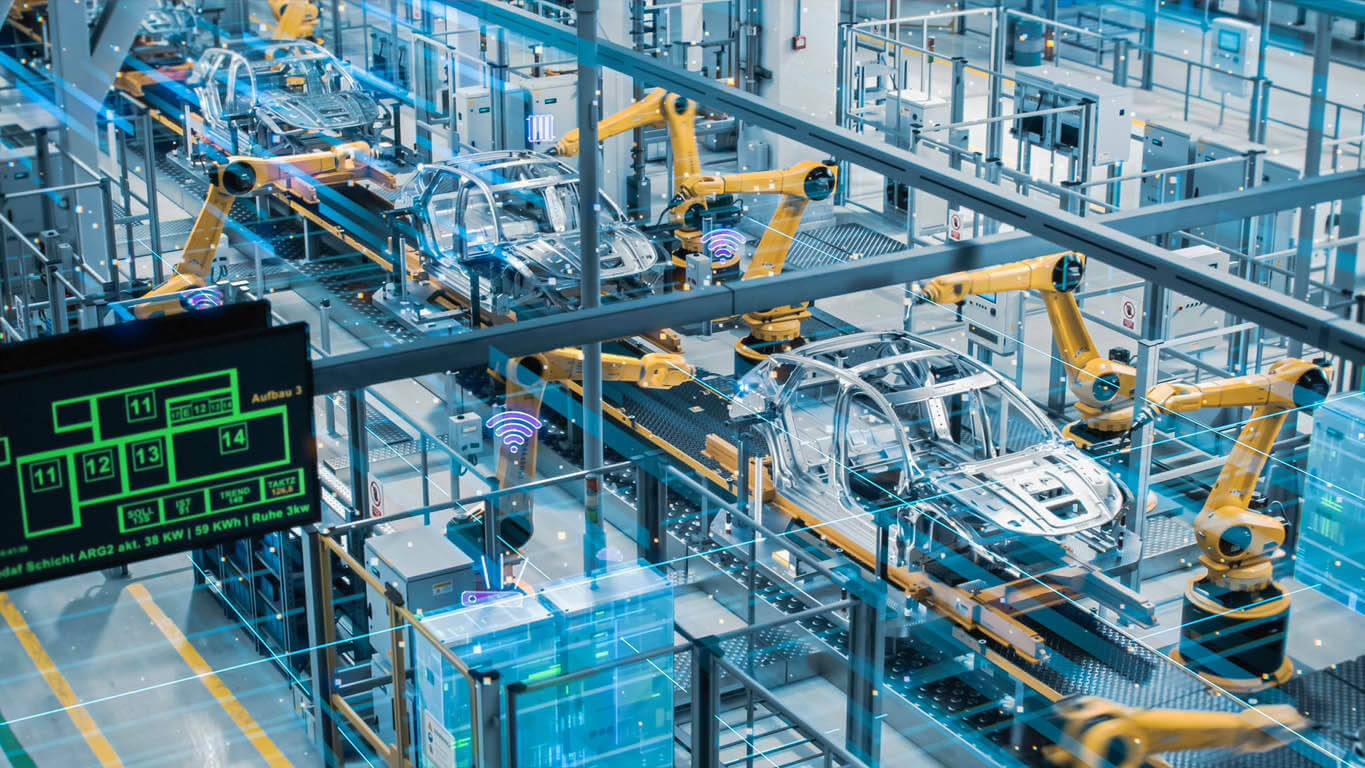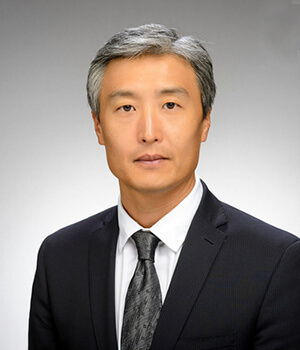Will a robot take my job? Notre Dame researcher says this view is overly pessimistic

With the impact of industrial robots on the U.S. labor markets in the past two decades, and an ever-increasing presence of machine-driven technology (such as artificial intelligence and ChatGPT), many employees have feared that one day robots will take their jobs.
Not necessarily so, according to research recently published by Yong Suk Lee, an assistant professor in the University of Notre Dame’s Keough School of Global Affairs. He and his co-author, Auburn University’s John Chung, found that industrial robots, particularly those used within the automotive industry, complemented human workers rather than replaced them — some even working collaboratively, side-by-side. Not only that, but the advanced digitization and automation of that industry likely increased labor productivity and created new tasks, requiring the hiring of more employees. In some cases, robot technology may have supplemented the workforce by filling in gaps that were left vacant when employees quit or moved on to other positions.

The study’s authors examined the influence of robots on the U.S. labor market between 2005 and 2016, analyzing the data in five-year intervals. For the first five years, robots did have a negative impact on the number of human employees and their local wages, but that impact rebounded and turned positive in more recent years, beginning around 2010.
Comparing data from the U.S. Bureau of Labor Statistics, the Organization for Economic Cooperation and Development and the International Federation of Robotics, the researchers were able to track that reversal and determine its source. Productivity could have increased due to three factors, they wrote: the automation of tasks and a reduction in production costs, the improvements of robot technology performing the same tasks, and the creation of new tasks spurred by those automation technologies and abilities.
Productivity gains from task automation occur when robots are able to perform certain tasks better or faster than humans, the researchers wrote, providing a cost savings. Second, newer models of robots that work faster and more accurately than older models can also increase productivity, without displacing workers. Many of these new automation tasks require human workers to operate and manage them, however, especially as they become more complex, which increases the demand for laborers.
There has also been a recent shift in how robots are being used and what they are doing, Lee said. “When robots were initially introduced, the intent was to cut costs and replace human workers. But now companies are using ‘collaborative robots’ or ‘cobots,’ which are designed to work together with humans.”
Lee explained that in the automobile industry, for example, industrial robots were set up in a production line and human workers had to be kept separate from the machines due to the danger of proximity with large, moving parts. “But now the industry trend is to create a smaller robot that’s more agile and soft,” Lee said, “so that if it bumps into its collaborative human partner at all, it will just stop. It interacts more, making it a much safer environment.
“When robots were initially introduced, the intent was to cut costs and replace human workers. But now companies are using ‘collaborative robots’ or ‘cobots,’ which are designed to work together with humans.”
“This new collaborative environment implies that the goal of robots is not necessarily to replace human beings, but to actually augment them.”
The implications for labor workers will be different now that the robots can potentially make them more productive, rather than laying them off, Lee said. “New and advanced robot technology is more sophisticated in that they can be programmed to do multiple tasks. If you think of artificial intelligence or specialized software being incorporated into the robot technology, then the robots can ‘learn’ and adjust to the environment.”
When companies learn to harness robotic technology, they can efficiently produce their goods and exceed production targets, and eventually take on more work or begin new projects, Lee explained. “As a company adopts new technologies, sometimes new tasks are created that we didn’t even know existed before but that are now being initiated.”
But along with that new technology and those new tasks, Lee said, human experts still need to be hired to design, develop and manage those capabilities. “Our findings pointed to the automotive sector in the U.S., which is the largest adopter of robotics, and we see this transitioning of what an automobile is, what the industry is (i.e., electric vehicles). I think that will create a different type of demand for tasks, skills and workers. Robots can not only help existing workers, but can help recruit new, specialized workers in that domain as the technology evolves.”
The other side to that coin is that there’s a constant shortage of manufacturing workers, Lee added. “The demand for robots is changing as we need to augment labor to fill in those gaps where there is a shortage of employees.”
The researchers also found evidence of spillover effects on other supporting industries within and outside of the specific manufacturing sector. Relying on commuting zones as their parameters of influence, they saw a boost in the service sectors within that local economy. “We found growth in the professional services like accountants, lawyers, etc., for example, but also in retail, food and other services,” Lee said.
“Humans are the ones creating these new technologies and adopting them — and their intentions actually matter. I think technology will become a larger factor in either the inequality or well-being of human laborers in the future.”
Regarding the quickly evolving artificial intelligence and ChatGPT technologies, Lee suggested we learn to harness these revolutionary capabilities rather than fear them. “They could create new opportunities that we haven’t yet seen or thought of,” Lee theorized. “And then there may be fresh demands for completely new jobs and new employees.”
The researchers concluded that the impact of robot technology on jobs will continue to evolve, and that further research will be able to shed light on how and where those impacts will occur, as well as on how robots and human labor may interact.
“Humans are the ones creating these new technologies and adopting them — and their intentions actually matter,” Lee said. “I think technology will become a larger factor in either the inequality or well-being of human laborers in the future.”
Contact: Tracy DeStazio, assistant director of media relations, 574-631-9958 or tdestazi@nd.edu
Latest ND NewsWire
- Notre Dame Lead Innovation Team partners with local WIC program to identify, prevent lead poisoning in childrenB.A.B.E. store “shoppers” now have something new to help their families: free lead screening kits offered by the University of Notre Dame’s Lead Innovation Team.
- Vatican honors Martin and Carmel Naughton with papal awardThe late Pope Francis, in one of his last acts, conferred the honour of the Order of Saint Gregory the Great upon Carmel and Martin Naughton, Trustee Emeritus of the University of Notre Dame. The papal honor is in recognition of the Naughtons’ outstanding philanthropy in the areas of education and the arts, particularly in the provision of philanthropic support and scholarships to Catholic education at the University of Notre Dame and Kylemore Abbey, and in their transformative contributions to higher education in Ireland.
- Brain tumor growth patterns may help inform patient care managementAssistant Professor Meenal Datta (University of Notre Dame/Wes Evard) A team of researchers from the University of Notre Dame, Harvard Medical School/Massachusetts General Hospital, and Boston University has developed a technique for measuring a brain tumor’s mechanical force and a new model to estimate how much brain tissue a patient has lost.
- Notre Dame elects two new TrusteesTwo new Trustees — John F. Crowley and Danielle Walker Merfeld — have been elected to serve on the University of Notre Dame’s Board of Trustees effective July 1. …
- From reaction to resolution: The future of allergy treatmentTwelve-year-old Lauren Eglite was thrilled to attend a Notre Dame football game with her father, Erik, in 2017, even though her acute peanut allergy demands constant vigilance. She was even more excited when the stadium’s brand-new video board aired an NBC Fighting…
- Notre Dame student uses ‘American Ninja Warrior’ spotlight to fight world hunger via his nonprofitOn July 14 (Monday), a University of Notre Dame business student will compete in the semifinal round of NBC’s “American Ninja Warrior” to advocate for an end to world hunger, an ambition he works toward by making knotted dog toys and collecting donations to his nonprofit.












